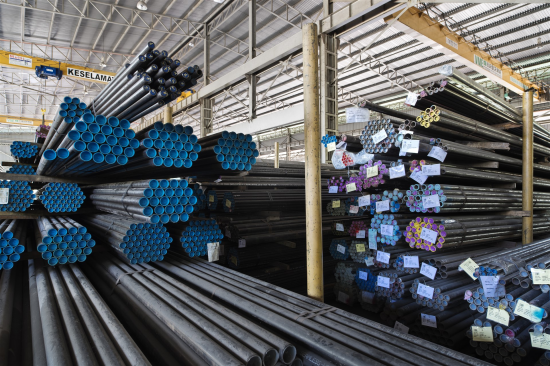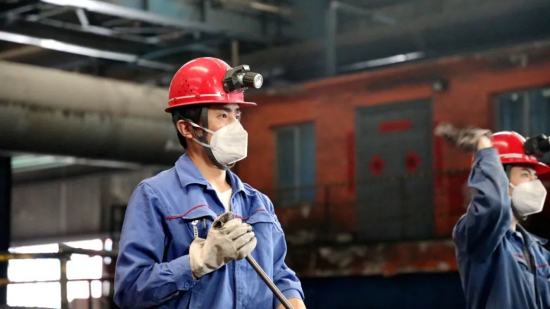【Steel】Not Yielding! Global Clampdown on Chinese Steel—Where Will Post-Holiday Prices Head?

Graphite electrodes are key materials for EAF steelmaking, mainly used for arc heating. With excellent conductivity and high-temperature resistance, they are crucial for improving EAF production efficiency and quality.
【Steel】Not Yielding! Global Clampdown on Chinese Steel—Where Will Post-Holiday Prices Head?
From an annual capacity of 150,000 tons to over half of the world's output, China's steel industry rose to the top in 70 years. Yet in 2024, it faces a coordinated offensive by 50 nations. This trillion-yuan steel empire is now fighting its most brutal survival battle.
From the U.S. imposing anti-dumping duties of up to 190% on Chinese stainless steel plates, to the EU's carbon tariffs of €50 per ton on Chinese steel, and Mexico's requirement that steel be melted and poured locally—2024 has seen 23 countries launch 45 anti-dumping investigations against China. The cost of steel exports from China has soared by 30%.
At the same time, with over 85% of iron ore dependent on imports and pricing power monopolized by four mining giants, China's steel industry is undergoing painful structural transformation—from "scale expansion" to "quality breakthrough." In April, the domestic general steel price index dropped nearly 3% at its lowest point. In Shanghai, spot rebar prices fell below 3,700 yuan/ton, a cumulative drop of over 200 yuan/ton from early April. This "price drop in peak season" stands in stark contrast to the average 2.8% increase seen over the past five years in the same period. As the strong demand season of March-April fades, can May steel prices rebound from the bottom?

Recent Tariff Actions Against Chinese Steel
1. United States: Comprehensive Tariff Hike to 245%, Targeting Indirect Exports
In April 2025, the Trump administration raised tariffs on certain Chinese goods from 145% to 245%, covering high steel-consuming sectors like electromechanical and construction machinery.
The U.S. also revoked steel tariff exemptions for countries like Canada and Mexico, reinstating a base rate of 25%, effectively cutting off indirect transshipment channels for Chinese steel.
2. South Korea: Targeted Anti-Dumping Duties of Up to 38.02%
On April 24, Korea imposed provisional anti-dumping duties of 27.91%–38.02% on Chinese hot-rolled medium-thick plates used in shipbuilding and construction. As China's second-largest steel export market, this move directly affects $1.4 billion worth of annual exports to Korea.
3. Southeast Asia and Others: Mounting Trade Barriers
Vietnam imposed 19.38%–37.13% tariffs on Chinese HRC and galvanized sheet, while restricting transshipment.
On April 21, India—the world’s second-largest crude steel producer—announced a 12% temporary duty on some imported steel to curb cheap imports from China.

Dual Impact of Global Tariffs on China's Steel Market
1. Export Pressure Mounting: Direct Exports May Drop Below 70 Million Tons
According to China Customs, steel exports exceeded 100 million tons in 2024. Exports have taken up a growing share of domestic steel distribution, increasing by 6.3% YoY in Q1. However, affected by tariffs from the U.S., Korea, and India, some experts predict direct exports could fall below 70 million tons. The U.S. "reciprocal tariffs" could also prompt other countries to adopt protectionist measures, squeezing both direct and indirect exports and raising costs via transshipment hubs like Vietnam and Korea—eroding price competitiveness.
2. Domestic Supply-Demand Imbalance Likely to Worsen
On April 25, Luo Tiejun, Executive Vice President of the China Iron and Steel Association, stated that China’s crude steel output has already peaked. Oversupply has been a persistent issue. As export volumes shrink due to trade barriers, more supply will be absorbed domestically, adding pressure to market fundamentals. With rising protectionism and uncertain global demand, price declines may accelerate.
May Steel Price Outlook
1. Demand Side:
After hitting bottom, China’s real estate sector is entering a prolonged period of consolidation, dragging down construction steel demand. Historically, demand in May surpasses March-April, but this year demand release is weak. According to 100njz.com, by April 29, fund availability at sample construction sites reached 58.8%, a slight weekly rise of 0.26%, showing marginal improvement. While real estate remains sluggish, manufacturing outperforms construction and may provide modest demand support in May.
2. Supply Side:
As of April 30, daily hot metal output reached a new high of 2.4542 million tons. With easing inventory pressure and raw material prices stabilizing at low levels, per-ton steel profits may rebound to around 100 yuan, incentivizing production resumption. However, as international tariffs take effect, reduced external demand may shift to domestic burden. Supply is expected to remain elevated in May.
3. Cost Side:
From January to April, raw material prices dropped significantly. As of April 29, price indices for billet, scrap, iron ore, coking coal, and coke declined by 13.17%, 17.84%, 14.29%, 39.21%, and 32.86% YoY, respectively. With end-use demand stagnant and hot metal output peaking, raw material prices are likely to remain under pressure in May.
Conclusion
While infrastructure investment is recovering, the real estate sector remains weak. Demand is unlikely to improve substantially, and with growing supply and deteriorating global trade environment, steel price volatility may intensify. May steel prices are expected to move within a narrow range, with limited upside or downside, but increased fluctuation frequency.
Despite facing global "encirclement," Chinese steel has never resorted to unfair trade practices. Ironically, while we are squeezed upstream by iron ore monopolies, we now face injustice downstream in global markets.
As 50 countries wield tariff weapons, Chinese steel responds with high-grade alloys that slice through blockades. From being reactive to setting the rules, this trillion-yuan industry is reshaping the global industrial map.
Do you believe China can retain its No.1 position in global steel? Share your insights in the comments below.
Feel free to contact us anytime for more information about the EAF Steel market. Our team is dedicated to providing you with in-depth insights and customized assistance based on your needs. Whether you have questions about product specifications, market trends, or pricing, we are here to help.
No related results found








0 Replies